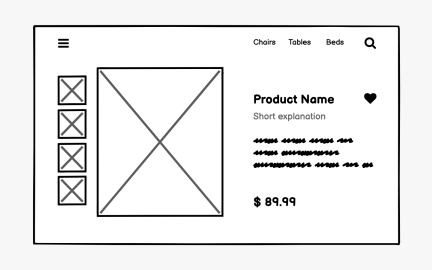Communication
Communication in design and product management is the exchange of ideas, feedback, and direction that drives collaboration, alignment, and clarity across teams.

Communication forms the backbone of every successful product and design initiative. It is more than just speaking or writing; it is about ensuring that ideas are understood, feedback is actionable, and direction is clear. In a fast-moving product environment, strong communication ensures alignment between cross-functional teams and prevents misunderstandings that can delay delivery.
In UX and UI design, communication is essential for translating creative ideas into practical solutions. Designers must communicate not only with product managers and engineers but also with users. Wireframes, prototypes, and visual assets all act as communication tools, bridging the gap between abstract concepts and tangible experiences. For instance, a design mockup can explain a workflow more clearly than a long explanation in text.
From the product management perspective, communication enables alignment between vision and execution. A product manager communicates the product roadmap to stakeholders, explains priorities to developers, and translates user needs into actionable tasks. The effectiveness of these communications directly influences whether a team can deliver features that satisfy business goals and user expectations.
Communication also comes in different forms depending on context. Synchronous methods like meetings, workshops, and calls provide immediate feedback, while asynchronous methods like documentation, design specs, or recorded demos create clarity without time constraints. Teams that master both approaches can balance speed with inclusivity, making sure no one is left behind due to time zones or schedules.
Poor communication, by contrast, often leads to wasted time, duplicated work, or conflicting interpretations. For example, a design team might build a feature assuming it solves a critical user pain point, only to find out later that product management had deprioritized that feature. These misalignments are costly, making intentional communication strategies critical to long-term success.
Learn more about this in the Communication & Collaboration Strategies Lesson, a part of the Leadership Mastery Course.
Key Takeaways
- Communication ensures clarity, alignment, and collaboration across teams.
- Designers use prototypes and visuals as communication tools.
- Product managers rely on communication to connect vision with execution.
- Synchronous and asynchronous methods serve different purposes.
- Poor communication leads to costly misalignment and wasted effort.
Communication is critical because it bridges gaps between different disciplines, aligning everyone toward the same goal. Without strong communication, teams may misinterpret priorities, duplicate efforts, or overlook user needs. Clear dialogue ensures ideas move from concept to execution without unnecessary friction.
It also builds trust within teams and with stakeholders. When communication is transparent and consistent, people feel confident in the process, making collaboration smoother and outcomes stronger.
Teams can improve communication by blending synchronous and asynchronous channels. Standups and reviews provide quick, real-time feedback, while documentation and shared tools create long-term clarity. Establishing rituals like retrospectives also creates structured opportunities for honest dialogue.
Additionally, visual communication, like wireframes or flowcharts, often communicates ideas faster than text. By using the right format at the right moment, teams make communication both efficient and effective.
Empathy allows teams to adapt communication to different audiences. Stakeholders may need high-level summaries, while engineers require detailed specifications. By considering the listener’s perspective, communicators ensure their message resonates and reduces confusion.
This adaptability strengthens relationships across disciplines. When people feel heard and understood, they are more engaged and collaborative, making communication not just informative but also impactful.
Recommended resources
Courses

Mentorship Mastery

Design Thinking

Workshop Facilitation
Lessons

Intro to Wireframing

Intro to Design Composition

Business Model Canvas
Exercises
Tutorials

How to Make the Most Out of ChatGPT for UX Writing: Part 1

Articulating Design Decisions to Stakeholders

How To Celebrate Failures With Your UX Team
Projects
Icons to Haunt Your Designs!

Dying Revolution - Making top 100 scoring game in four days for GMTK 2025











